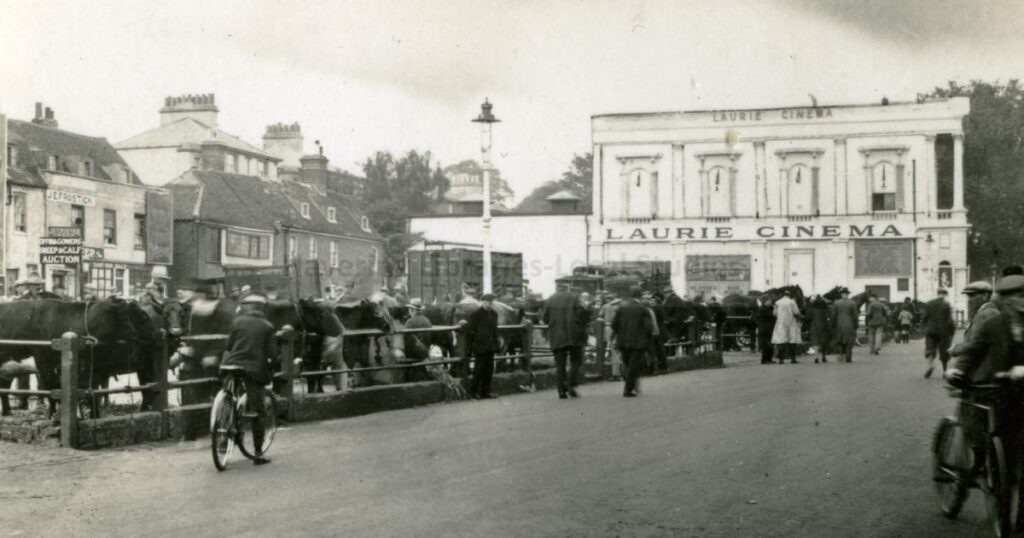This week, the Recorder is looking back at the history of the town’s first cinemas – the Picture Pavilion and the Laurie Cinema – which competed with open-air venues after their launch.
Although the Laurie Cinema is often described as Romford’s earliest cinema, the Picture Pavilion actually predated it at least by a year.
Picture Pavilion (right of the images) in South Street, c. 1914(Image: Havering Libraries-Local Studies)
According to Havering Libraries, the Picture Pavilion was open in South Street by September 1912 at the latest – as revealed by a report in the Chelmsford Chronicle at the time of an 89-year-old slipping down the steps of the premises and fracturing her thigh bone.
READ MORE: Waitrose, St Marys Lane, Upminster history as ‘super cinema’
While there are not many details available about the first films shown there, the first manager is named by Havering Libraries as Frank Coates, who later became a dispatch rider in the Royal Artillery.
The Laurie Cinema opened a year later in Market Place to become Romford’s second cinema, converted from an old town hall which had been enlarged to accommodate between 700 and 800 cinemagoers.

An article in the Essex Times in August 1913 described how the hall was “transformed into a luxuriously appointed picture theatre” with decorations and embellishments that were “most attractive”.
On opening night it showed an adaptation of Lady Audley’s Secret, and a “large orchestra” was later introduced to the venue, according to magazine Kinematograph.
READ MORE: Tesco, Collier Row history as Rex Cinema and Victor Value

During this time, “travelling cinemas” or bioscopes were common, says Havering Libraries, and in 1912 an open-air cinema opened in Romford.
This is believed to have been located at the “Cosy Corner Theatre of Varieties”, which was a prefabricated building on the corner of a field accessed from Victoria Road.
The Picture Pavilion was renamed the Victory Palace in late 1919 and later replaced by the Plaza Super Cinema in January 1930.

Eventually, the Quadrant Arcade was built in the old cinema’s place in 1934.
Meanwhile, the Laurie Cinema shut in 1939 – only to be reopened two years later by the Mayor of Romford at the time.
It later changed its name to Vogue Cinema in 1944 and went through several owners and temporary closures before finally shutting down in April 1954.
The building was used for other purposes until it was demolished in January 1970.




